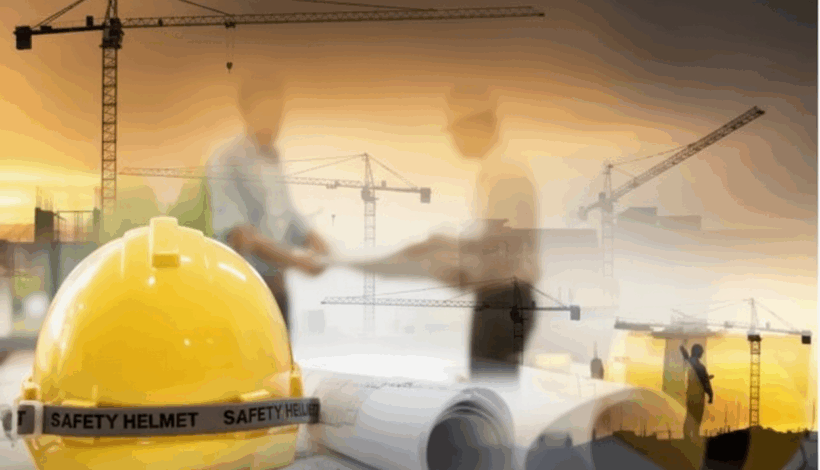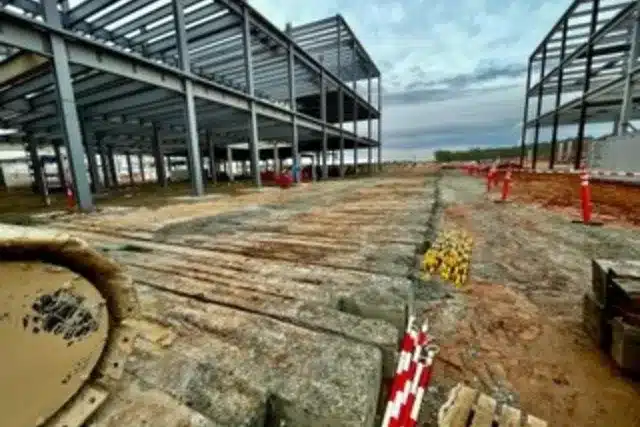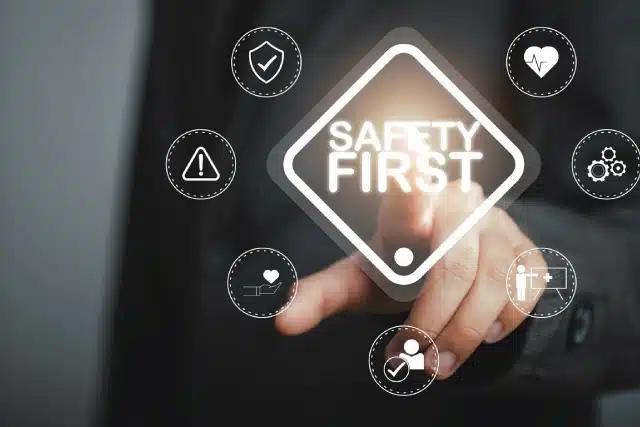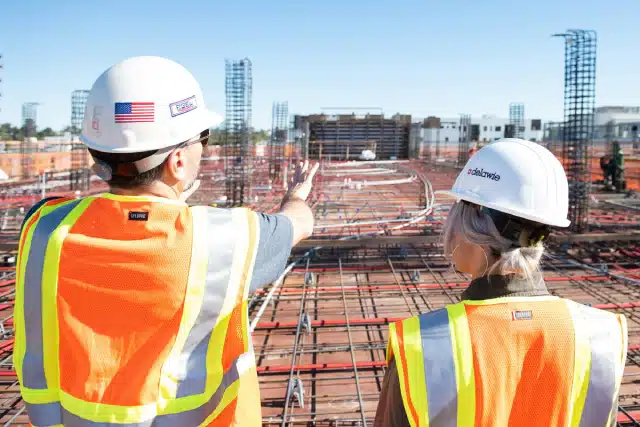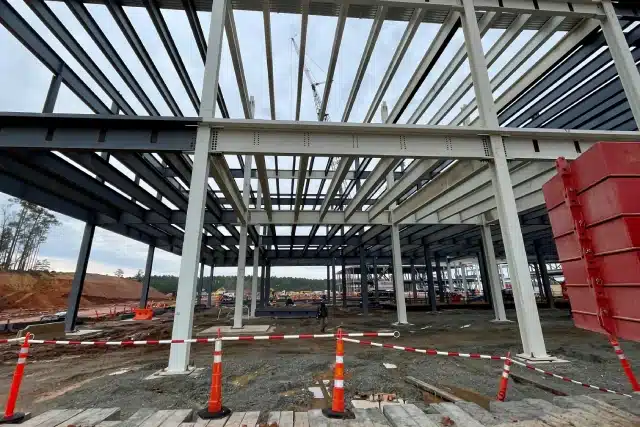A well-structured safety program is crucial for maintaining a safe work environment and ensuring compliance with OSHA regulations. Companies must maintain proper documentation to demonstrate their commitment to workplace safety and protect themselves in the event of an audit or incident. Safety documentation is the foundation of a comprehensive safety program. These materials ensure that everyone, from new hires to seasoned supervisors, understands the procedures and responsibilities that maintain a safe workplace. Every industry benefits from having clear, accessible safety documentation. Below is a breakdown of the 10 essential documents every company should include in its safety program.
OSHA’s Top 10 Cited Standards for 2025
The Occupational Safety and Health Administration (OSHA) plays a vital role in protecting workers and promoting safe and healthy working conditions across all industries in the United States. Through routine inspections and enforcement of safety regulations, OSHA helps ensure that employers maintain workplaces free from recognized hazards. Each year, the agency releases its list of the Top 10 Most Frequently Cited Standards, providing valuable insight into the most common areas where companies fall short of compliance. For fiscal year 2025, which runs from October 1, 2024, through September 30, 2025, OSHA has once again identified the same key standards that dominated last year’s list—though their rankings have shifted slightly. This consistency highlights ongoing challenges many employers face in addressing fundamental safety requirements, underscoring the importance of proactive training, regular inspections, and a strong safety culture to prevent violations and protect workers. Here is this year’s list:
15 Common Contributing Factors to Workplace Injuries
Workplace injuries continue to be a significant concern for North Carolina businesses, impacting employee well-being, productivity, and the bottom line. Thousands of workers across the state are injured each year, with incidents frequently occurring in construction, manufacturing, agriculture, healthcare, and warehousing. Beyond the costs of medical treatment and workers’ compensation, injuries disrupt operations, lower morale, and can damage a company’s reputation. By understanding the most common contributing factors to workplace injuries in North Carolina, employers can take targeted steps to reduce risks, comply with safety regulations, and protect their workforce. We’ll look at 15 common factors that contribute to workplace injuries and share practical tips to help prevent them.
Safety Training and Emergency Preparedness: 5 Steps to Protect Your Workplace
September is recognized as National Emergency Preparedness Month, making it the perfect time for businesses to take a proactive look at their workplace safety measures. Emergencies—whether natural disasters, fires, medical incidents, or other unexpected crises—can happen at any time. While no organization can prevent every incident, being prepared significantly reduces risks, minimizes disruption, and most importantly, saves lives.
The True Cost of a Workplace Accident
When a workplace accident occurs, the immediate concern is the health and safety of the injured employee. However, beneath the surface lie the hidden costs — financial, emotional, and reputational — that ripple far beyond the initial incident. For businesses, especially those operating in high-risk industries such as construction, crane rental, manufacturing, and logistics, understanding the actual cost of a workplace accident is crucial in shaping a proactive safety culture.
Protecting Workers from Heat Stress: Best Practices for Summer Construction
Summer brings long daylight hours and ideal conditions for construction projects, but it also introduces a dangerous environmental hazard for workers: heat stress. Construction sites, with their intense physical demands and frequent exposure to direct sunlight, pose a heightened risk to workers for heat-related illnesses—these range from minor heat rashes to life-threatening conditions like heat stroke. As temperatures climb, so does the need for proactive safety training. Experts predict an especially hot and humid summer, making it critical to revisit heat safety best practices and invest in proper construction safety training.
Navigating the Dangers of Silica Dust Exposure in Workplace
In countless industries — from construction and mining to manufacturing and oil and gas — workers face hidden dangers that often go unnoticed until it’s too late. One such hazard is silica dust, a fine particulate matter that, when inhaled, can cause severe and sometimes fatal health conditions. Navigating the dangers of silica dust exposure is crucial to maintaining a safe and healthy work environment. Understanding the risks, implementing protective measures, and incorporating comprehensive safety training can dramatically reduce the threat.
Ensuring Safety for New, Young Construction Workers
Construction sites are fast-paced, high-risk environments where safety must be prioritized. While all workers face potential hazards, new and young employees are especially at risk due to their limited experience and unfamiliarity with established safety protocols. Protecting these workers requires a proactive, comprehensive approach emphasizing thorough training, strong mentorship, clear communication, and a deeply rooted safety culture.
The Case for Hiring a Construction Site Safety Manager
Managing an industrial construction project has many challenges that demand careful attention and coordination. One of the primary obstacles is effectively managing a diverse group, including engineers, architects, contractors, and suppliers, each with their own needs, timelines, and expectations. On top of this, complying with safety regulations and environmental standards adds a further layer of complexity. The scale of these projects requires meticulous logistical planning, from sourcing materials to coordinating transportation and securing necessary permits. Unforeseen delays—whether due to weather, unexpected site conditions, or regulatory issues—can also derail schedules and increase costs. In the midst of all these moving parts, maintaining clear communication and strong problem-solving skills is crucial to ensuring the project runs smoothly. Above all, safeguarding the workforce is paramount. As organizations strive to create a safe working environment and meet rigorous safety standards, many are left asking: Is it time to hire a site safety manager?
Enhancing Construction Site Safety with JHAs
Construction sites are fast-paced, ever-changing environments where multiple tasks occur simultaneously, often involving heavy machinery, complex processes, and large teams. In such high-risk settings, safety must be a top priority. One of the most effective ways to identify and mitigate potential hazards is through Job Hazard Analysis (JHA). This proactive approach requires supervisors and managers to evaluate each task systematically, anticipate potential risks, and implement preventive measures. When integrated into a comprehensive safety program, JHAs help create a safer work environment by addressing hazards before they lead to accidents or injuries.


